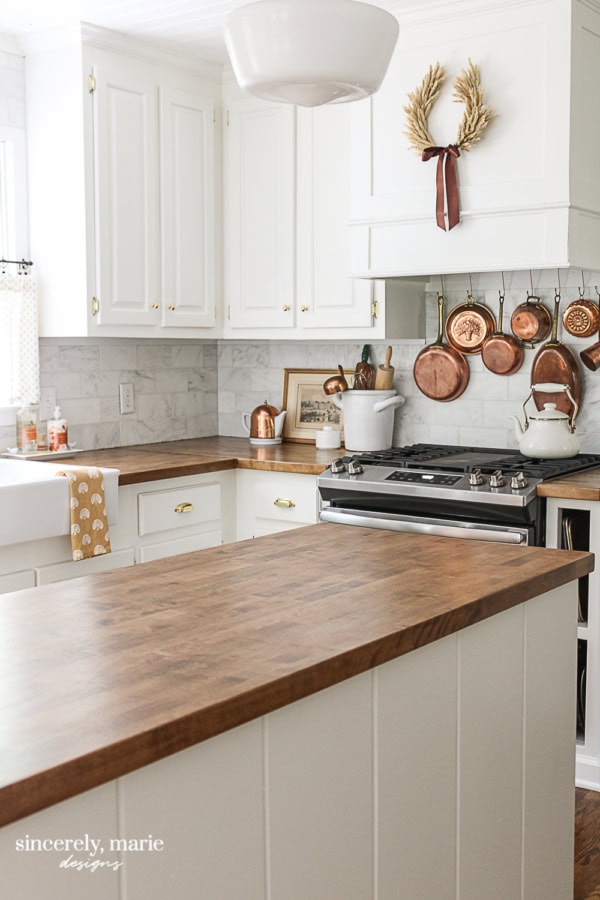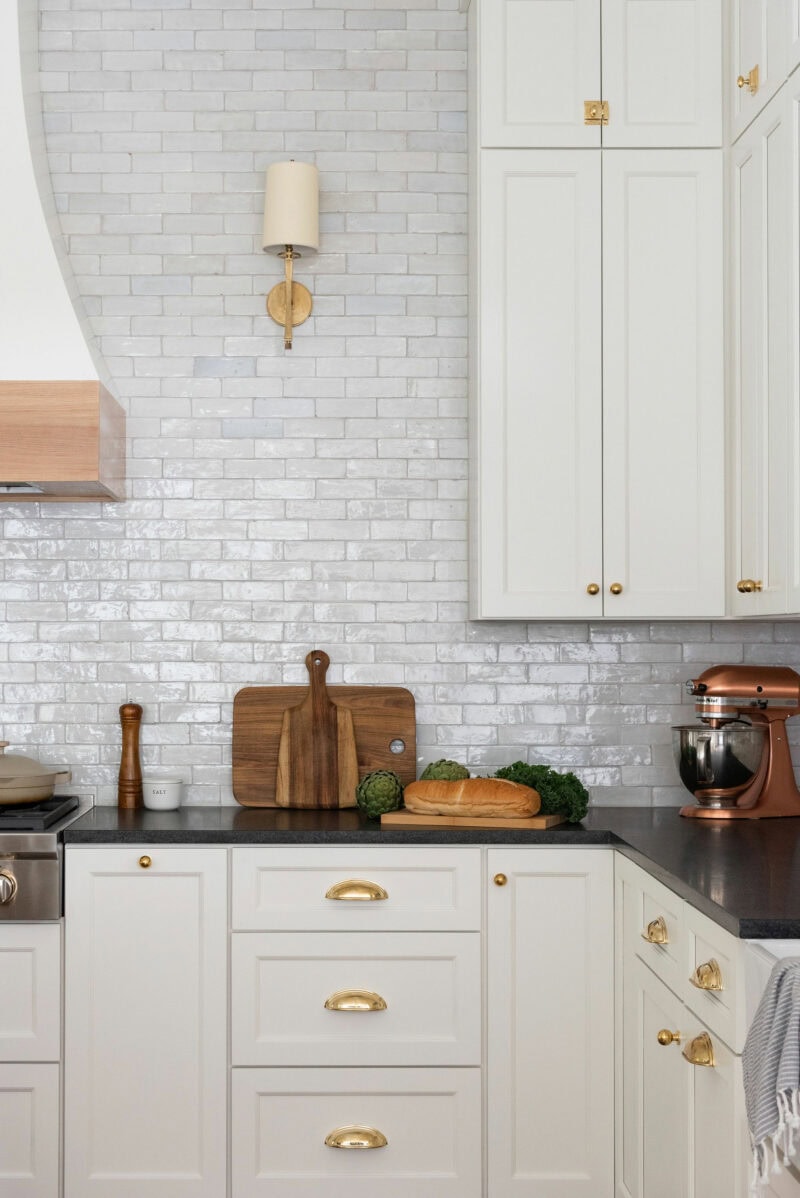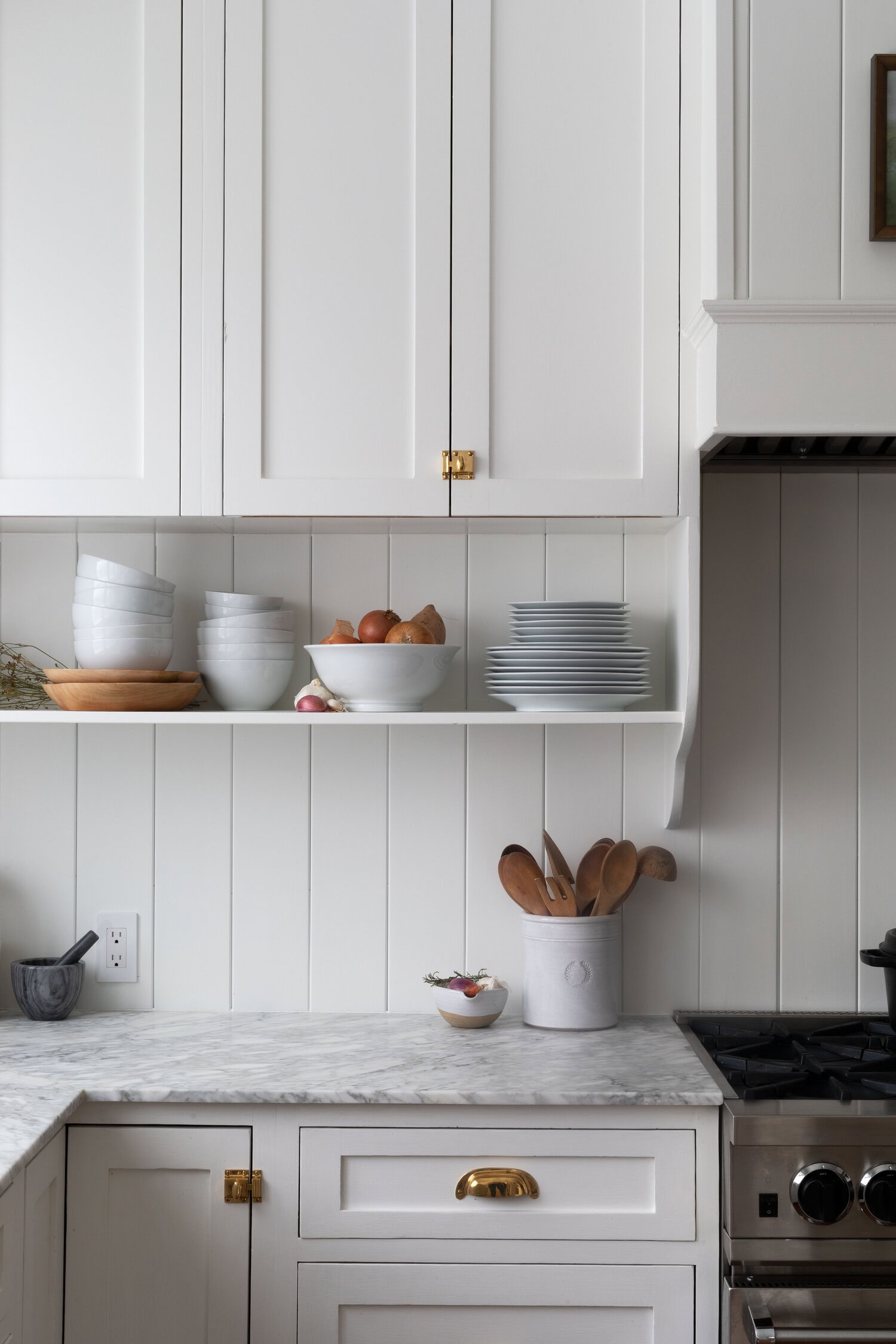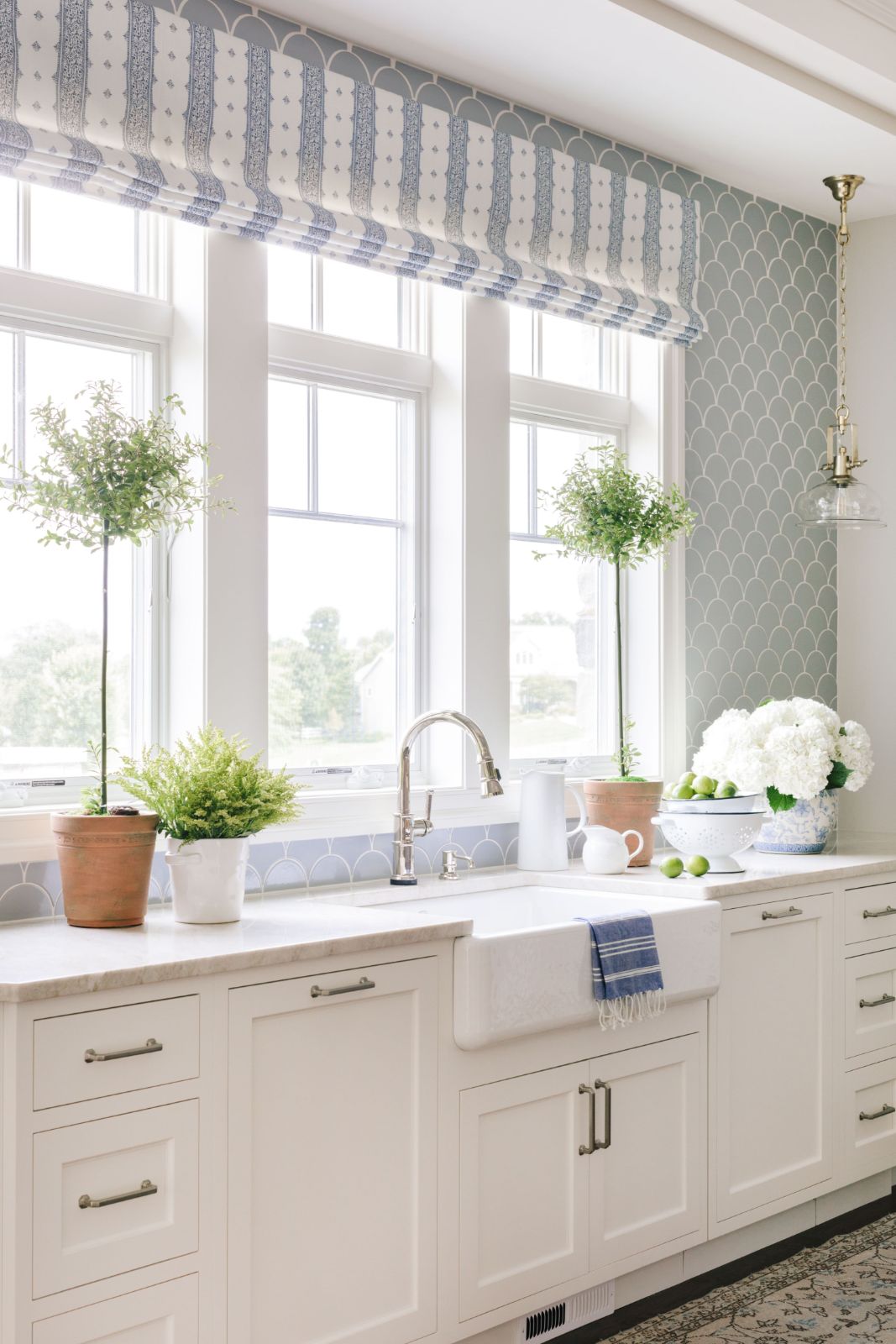Trying to figure out how to choose kitchen countertops can feel overwhelming when you’re faced with so many choices, prices, and materials that all promise durability.
You want something that looks nice and fits your space, but you also worry about stains, scratches, and how well it holds up over time.
Some surfaces are too expensive, while others might not match your cabinets or need more upkeep than you’re ready to handle.
It’s frustrating when you fall in love with a look only to learn it chips easily or won’t handle heat from pots and pans.
You spend hours searching for ideas, but the more you read, the harder it gets to feel sure about any decision.
There’s also the pressure to pick something timeless that still feels modern and makes your kitchen feel fresh for years to come.
If you cook often, you need something easy to clean and safe for prepping food, not just something that looks pretty in photos.
This post may contain affiliate links. As an Amazon Associate and a participant in other affiliate programs, I earn a commission on qualifying purchases at no additional cost to you.
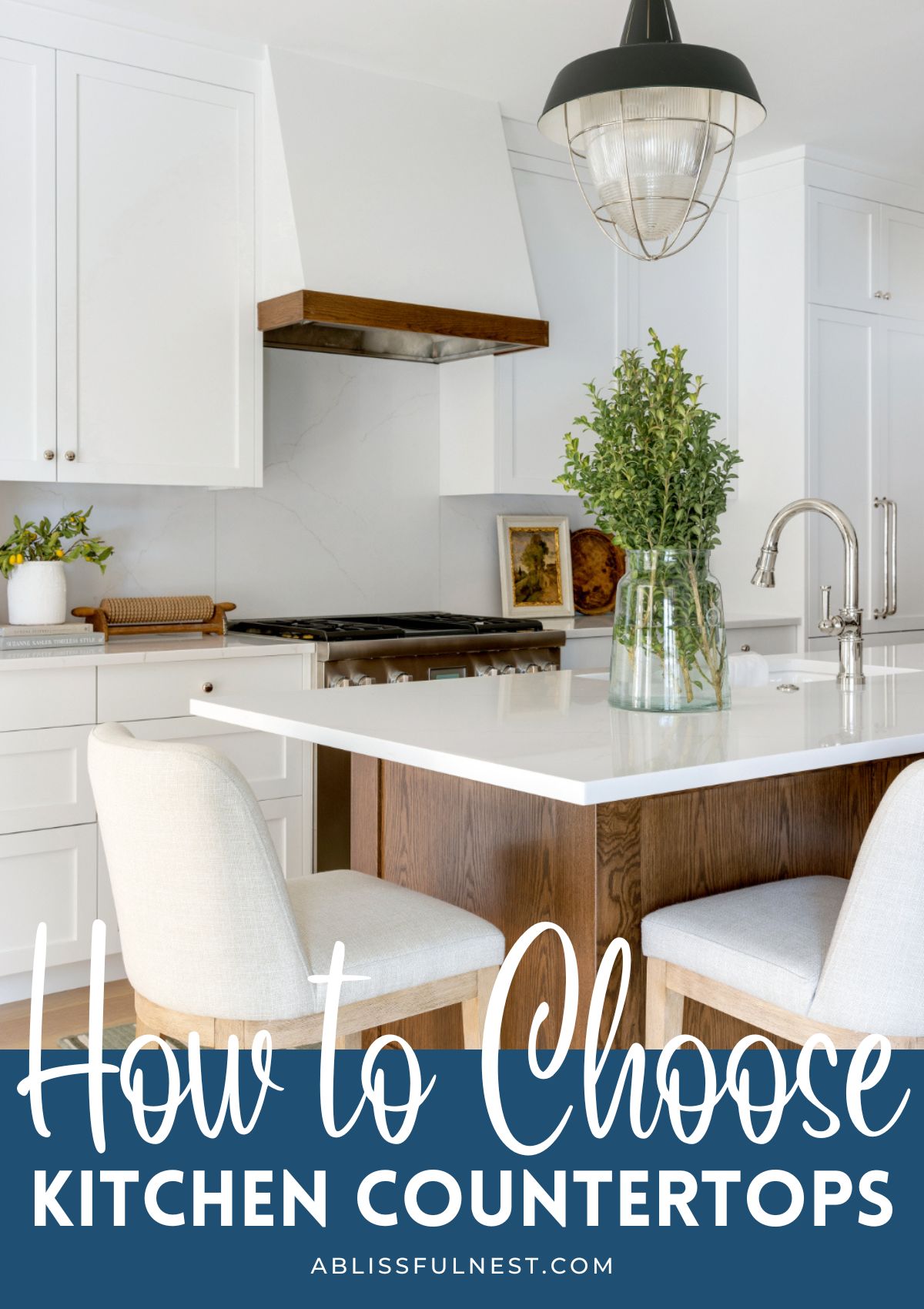
And if your home is busy with kids or guests, durability and low maintenance start to matter more than you ever expected.
The good news is that there are great countertop options out there for every lifestyle, budget, and kitchen layout.
Once you know what works best for your needs, you can enjoy a countertop that brings beauty, function, and confidence into your space.
What To Consider Before Choosing Kitchen Countertops
Before picking your countertop, think about how your kitchen gets used and what you expect it to handle each day without falling apart.
Some people cook big meals daily, while others use the kitchen more for snacks or light prep, so your lifestyle should guide your decision.
If you’re constantly cleaning up after kids or guests, you’ll want something tough, easy to wipe down, and hard to stain.
Think about how often you use hot pans, sharp knives, or strong cleaners that might damage a surface if it’s too soft or porous.
Also, consider whether your kitchen gets direct sunlight, which can fade certain materials over time and change how they look.
Budget plays a big role too, since some countertops need sealing, special cleaners, or even pro help just to stay in good shape.
Don’t forget how the surface feels to the touch. Some are smooth and cool, while others have a texture that may collect crumbs and spills.
If your space is small or dark, a light countertop can help open up the room and make it feel more welcoming.
The right countertop should fit your budget, match your lifestyle, and hold up to everything your kitchen throws at it daily.
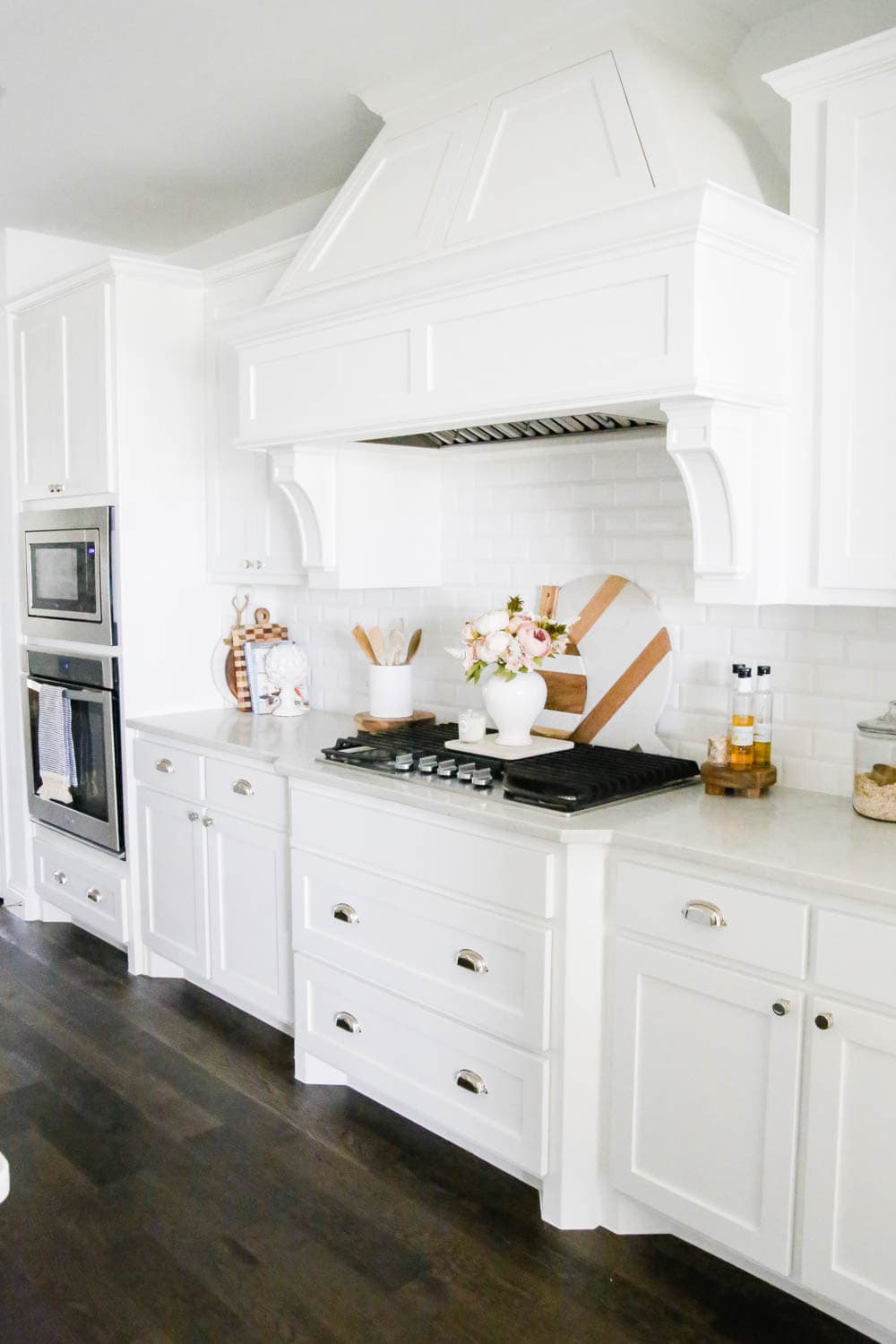
More Kitchen Design Ideas + Inspiration
How To Match Your Countertops With Your Cabinets And Flooring
Choosing a countertop is easier when you consider how it works with your cabinets, floors, and other details that make up your kitchen’s design.
Start by deciding which feature you want to stand out the most, whether it’s your cabinets, floor, or the surface of the countertop.
If your cabinets are white or light, a darker countertop can add strong contrast and make the overall space feel grounded and well-defined.
Dark cabinetry pairs nicely with light countertops, which help brighten the room and keep the space from feeling too closed off or heavy.
Natural wood cabinets look great with neutral or stone-look surfaces that highlight the grain and add warmth to the overall kitchen palette.
Bold floors need simple countertops to avoid competing patterns, which keeps the kitchen calm and easy to decorate with accessories or small appliances.
Make sure all your tones are either warm or cool so the cabinets, floor, and counters blend well and look unified from every angle.
A matte finish adds softness and a modern touch, while a glossy surface reflects light and works well in darker or smaller kitchen spaces.
Always test samples at home to see how they look with your lighting, walls, and other materials before making a final decision.
When your countertop matches well, the entire kitchen looks polished, balanced, and thoughtfully designed without feeling too plain or overly styled.
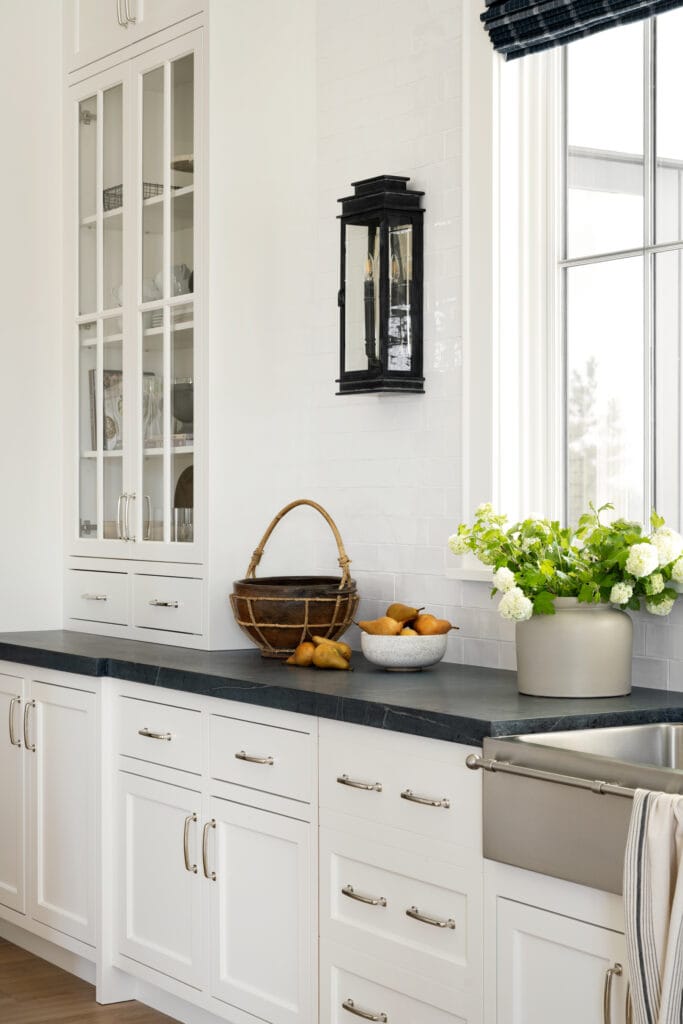
What To Have On Hand To Clean And Maintain Kitchen Countertops
Different countertops need different care, but most just need regular wiping, gentle products, and protection from heat or harsh chemicals.
Keep these tools close to help your surface stay clean and beautiful without needing deep scrubbing every time you use the kitchen.
Tap Photos To Shop
Most Popular Kitchen Countertop Materials (Pros and Cons)
Each countertop material comes with strengths and downsides, so knowing how they work in real kitchens makes it easier to pick the right one.
Quartz is strong, easy to clean, and doesn’t need sealing, making it a favorite for busy kitchens with lots of cooking and family activity.
Would you like to save this post?
It’s available in many colors and patterns that mimic natural stone while offering a smoother, more consistent look across large surfaces.
Quartz can fade in strong sunlight, so it’s best for kitchens without direct sun exposure or large uncovered windows over the counters.
Granite offers a unique, natural look with beautiful patterns, and it stands up well to heat from pots, pans, or hot trays.
Each slab is different, so your counters will have a one-of-a-kind appearance that adds style and value to the kitchen.
Granite must be sealed regularly to prevent stains, and poor installation can lead to cracks or uneven seams over time.
Marble brings timeless beauty and a cool surface perfect for light prep or baking, especially in kitchens that focus on presentation and style.
It is porous and soft, so it scratches and stains easily if used for daily cooking or heavy prep work without proper care.
Marble requires frequent sealing and gentle cleaning products to keep it looking clean, smooth, and free of etching or water spots.
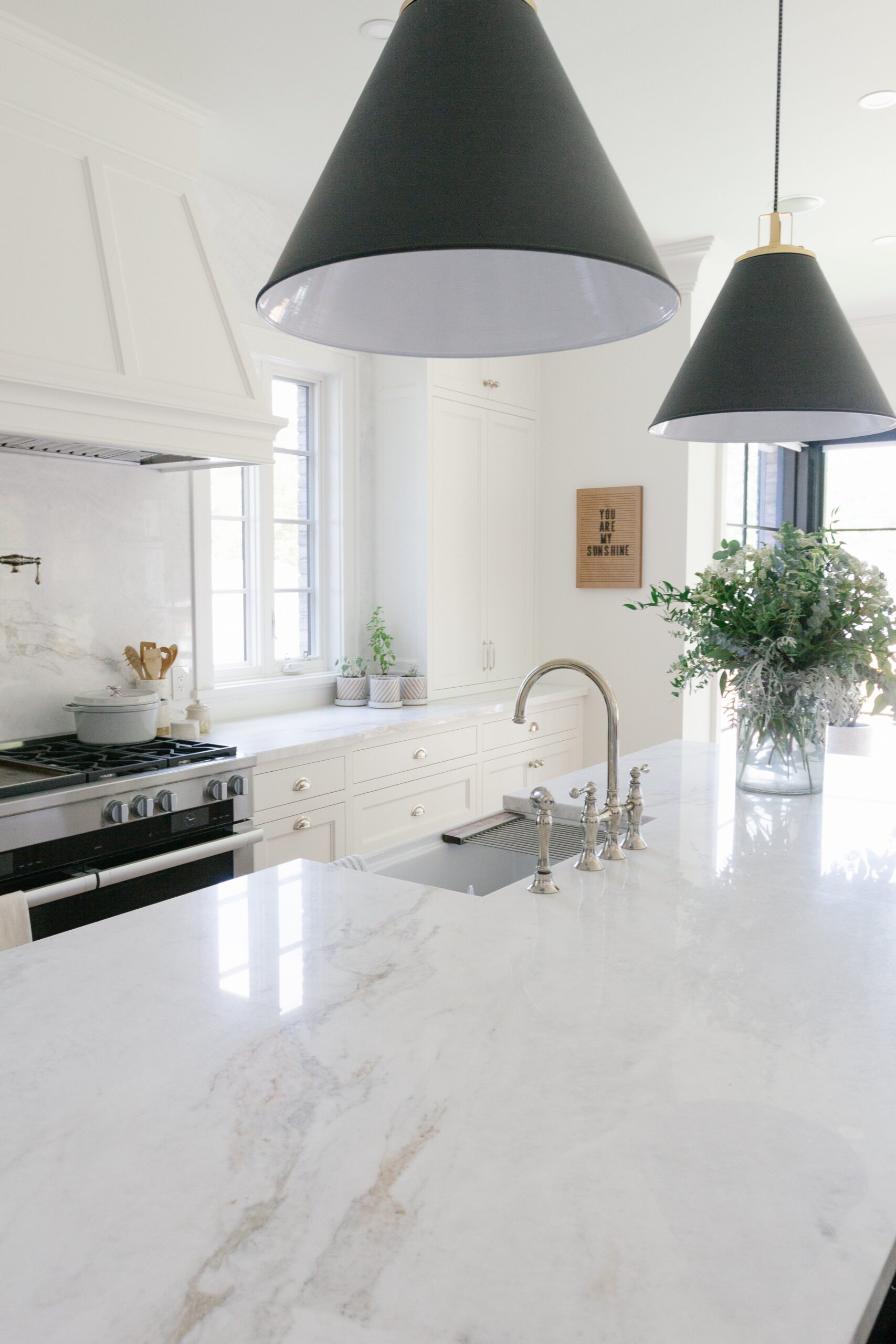
Butcher block adds warmth, charm, and a cozy, lived-in feel that fits well in farmhouse, cottage, or rustic kitchen designs.
It’s easy to sand down and refinish, but it also shows knife marks, water spots, and heat damage more than stone materials.
Regular oiling helps protect the surface and keeps it from drying out, but this adds maintenance that some homeowners want to avoid.
Concrete has a sleek, custom look that fits modern or industrial kitchens and can be tinted or finished to suit your exact style.
It holds up well to heat and weight, but it must be sealed to prevent stains, chips, or cracking from daily wear and moisture.
Concrete can feel cold or too hard under your hands, and it’s heavy, so your cabinets need to support its weight properly.
Soapstone offers a soft, smooth finish and natural matte look that resists stains and heat, making it a durable and low-maintenance choice.
It has a rich, dark appearance that deepens over time and blends beautifully with both modern and vintage kitchen designs.
Soapstone is easy to scratch, but small marks can be sanded out, and many homeowners enjoy the aged patina it develops with use.
Before making a final decision, consider how each one feels, functions, and holds up in your type of kitchen.
How To Choose Kitchen Countertops
Finding the right countertop means thinking through your style, daily routine, and how much maintenance you’re willing to keep up with long term.
Follow these simple steps to pick something beautiful, useful, and strong enough to withstand the abuse your kitchen may cause.
Step 1: Think About Your Daily Routine
Start by asking yourself how often you cook, what kind of meals you make, and how messy things get during prep and cleanup. Busy kitchens need tough, stain-resistant surfaces, while low-use kitchens can handle softer materials that just need light care. Knowing how your kitchen works helps you avoid picking a surface that looks nice but doesn’t meet your daily needs.
Step 2: Set a Clear Budget
Decide how much you can spend, including material, labor, and any upgrades like custom edges or a matching backsplash. Keep in mind that some materials cost more upfront but save money later by lasting longer and needing less upkeep. Your budget should leave room for small changes and unexpected costs, so you stay flexible if plans shift.
Step 3: Look at Samples in Your Space
Bring home a few samples to see how they look with your lighting, cabinets, wall color, and floor. What looks great in a store might feel too dark, too shiny, or just off when seen in your own kitchen. Lighting changes everything, so check each sample during the day and evening before making your final choice.
Step 4: Consider How It Feels to the Touch
Some surfaces feel soft and warm, while others are smooth, cool, or textured with ridges that collect dirt or crumbs. You’ll notice the difference every time you prep food or lean on the counter, so choose a finish that feels good daily. Comfort matters just as much as appearance when it comes to surfaces you use multiple times a day.
Step 5: Compare Long-Term Care Needs
Some countertops need sealing, oiling, or gentle cleaners, while others can take anything and still look great. If you want low upkeep, avoid high-maintenance materials even if they look beautiful on the outside. Choose something that fits your lifestyle so the upkeep feels easy and not like another chore on your list.
Frequently Asked Questions
Quartz is one of the most durable materials because it resists stains, scratches, and heat while needing little upkeep for everyday use. It’s a strong option for busy kitchens and families who want beauty without worrying about damage or deep cleaning.
Quartz is man-made and has a more consistent look, while granite is natural, and each slab has unique patterns. Quartz needs less maintenance, but granite offers more variation and a real stone feel that some homeowners prefer.
Marble looks timeless and elegant, but it stains and scratches easily, so it’s better for light cooking or low-traffic kitchens. If sealed regularly and handled with care, it can still be a stunning countertop for many kitchens.
Natural stone like granite, marble, and concrete usually needs sealing to prevent stains, water damage, and wear. Sealing helps protect the surface and makes it easier to clean without soaking in spills or grease.
Most kitchen countertops are 1¼ inches thick, which offers a sturdy feel and works well with most cabinet types and supports. Thinner or thicker slabs are possible, but 1¼ inches gives you a strong surface without extra weight or cost.
Choosing the right surface can be frustrating when nothing seems to fit your style, daily needs, or budget without needing constant care or attention.
Learning how to choose kitchen countertops makes the process easier and helps you focus on what truly matters for comfort, style, and long-term use.
The best countertop is one that looks beautiful, feels right, and handles the messes and heat of daily kitchen life without falling apart.
You should not have to sacrifice durability or personality just to match what’s popular or available at your local home store.
So, find the right fit for your kitchen and make it a space you enjoy spending time in every single day of the week.



